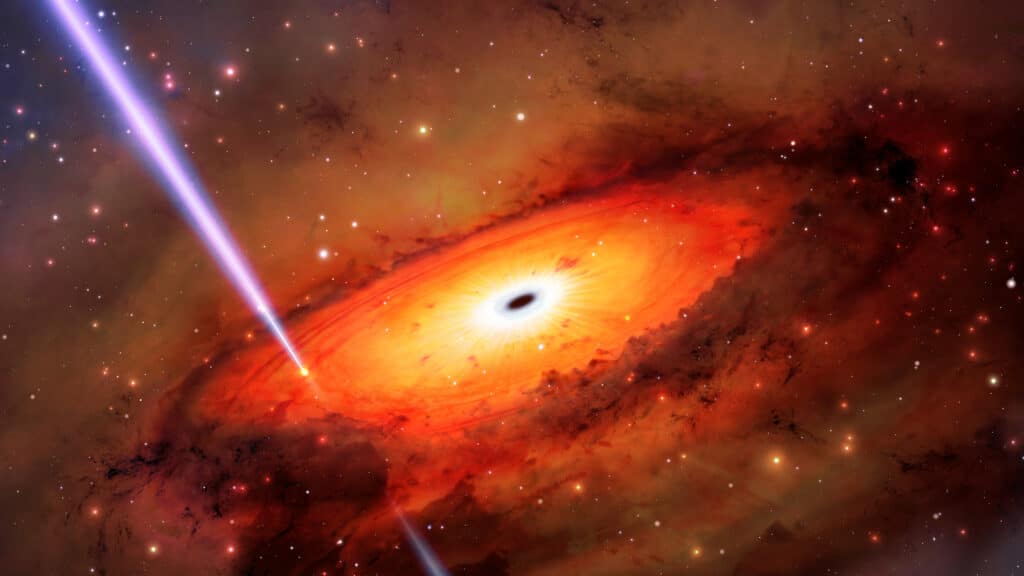Rare Stellar Collision Discovered Near Ancient Galaxy’s Supermassive Black Hole
In a groundbreaking study, astronomers have found evidence of a never-before-seen fourth option for the death of stars in the universe. Most stars meet their fate in predictable ways based on their mass, either becoming white dwarf stars or undergoing cataclysmic supernova explosions to form neutron stars or black holes. However, new research suggests a different scenario: stars colliding with each other in the dense regions near ancient galaxies’ supermassive black holes.
The discovery came while astronomers were investigating the origins of a long-duration gamma-ray burst (GRB) using the Gemini South telescope in Chile, part of the International Gemini Observatory. The burst was detected on October 19, 2019 by NASA’s Neil Gehrels Swift Observatory, and it lasted for over a minute, qualifying as a “long” GRB.
Instead of the expected supernova death of a massive star, the researchers used Gemini South to observe the GRB’s fading afterglow, revealing that it was most likely caused by the merger of two compact objects. These objects could be remnants of stars like neutron stars or black holes.
“Our follow-up observation told us that rather than being a massive star collapsing, the burst was most likely caused by the merger of two compact objects,” explains lead author Andrew Levan from Radboud University, in a statement. “By pinpointing its location to the center of a previously identified ancient galaxy, we had the first tantalizing evidence of a new pathway for stars to meet their demise.”
This finding challenges the previous belief that long GRBs from colliding stellar remnants were extremely rare. In the chaotic environment surrounding a supermassive black hole in ancient galaxies, there may be a million or more stars packed within a small region. These extreme population densities create opportunities for occasional stellar collisions, particularly under the powerful gravitational influence of a supermassive black hole.
The researchers hope to detect more of these events and eventually match a GRB detection with a corresponding gravitational-wave detection. The upcoming Vera C. Rubin Observatory, expected to come online in 2025, will be instrumental in advancing this research.
“Studying gamma-ray bursts like these is a great example of how the field is really advanced by many facilities working together, from the detection of the GRB, to the discoveries of afterglows and distances with telescopes like Gemini, through to detailed dissection of events with observations across the electromagnetic spectrum,” says Martin Still, NSF’s program director for the International Gemini Observatory.
This discovery adds to the rich heritage of Gemini in advancing our understanding of stellar evolution and highlights the importance of time-sensitive observations for distant, dynamic events in the Universe.












